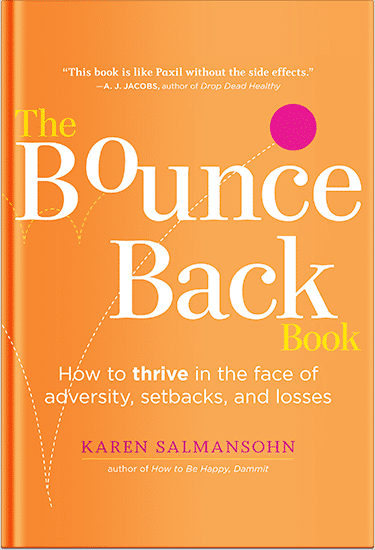 Dealing with muscle and joint pain can be frustrating and can affect your daily life. Pain can come from injuries, overuse, or just getting older. This discomfort can make it hard to do everyday activities and impact your well-being. Many people look for effective ways to relieve pain, and there are many treatments available. Learning about these options can help you take control of your health and find relief.
Dealing with muscle and joint pain can be frustrating and can affect your daily life. Pain can come from injuries, overuse, or just getting older. This discomfort can make it hard to do everyday activities and impact your well-being. Many people look for effective ways to relieve pain, and there are many treatments available. Learning about these options can help you take control of your health and find relief.
From simple home remedies to professional care, treating muscle and joint pain can be done with the right information. Whether you seek guidance at home or from specialists such as Arlington physical therapy, knowing what steps to take when pain occurs can improve your recovery and quality of life.
Here are some effective ways to treat muscle and joint pain.
Hot and Cold Therapy
One of the easiest and most effective ways to relieve muscle and joint pain is using hot and cold therapy. Heat can relax tight muscles and improve blood flow to the painful area. This is especially helpful before physical activity to help prevent injuries.
Cold therapy is good for reducing swelling and numbness. Ice packs or cold compresses can ease pain and swelling, especially after an injury or a tough workout. Using both hot and cold treatments can provide significant relief and help speed up healing.
Physiotherapy
Physiotherapy is important for treating muscle and joint pain. A qualified physiotherapist can create a personalized rehab plan that fits your specific needs. They assess your physical condition and develop exercise routines that help relieve pain and improve function.
Sessions may include hands-on techniques like massage and manipulation to promote healing and reduce tightness. Physiotherapists also teach posture and body mechanics to help prevent future injuries. They guide you through exercises that strengthen weak areas and increase flexibility, helping you find long-lasting relief.
Physical Activity
Staying active is key to managing muscle and joint pain. Regular low-impact exercises like walking, swimming, or cycling can strengthen muscles and improve flexibility without putting too much strain on your body. Movement helps keep your joints healthy and increases their range of motion.
Pay attention to your body and choose activities that feel good, not painful. Stretching exercises can also help ease tension and improve mobility. Sticking to a routine of physical activity can help you manage pain and improve your situation over time.
Over-the-Counter Medications
When muscle and joint pain become too much to handle, over-the-counter medications can help. Non-steroidal anti-inflammatory drugs (NSAIDs) like ibuprofen or naproxen can effectively reduce pain and inflammation. Always follow the dosage instructions on the label to use these safely.
Acetaminophen is another option for pain relief. It won’t reduce inflammation but can help manage general discomfort. If you have chronic pain, consult a healthcare provider for advice before using medication for ongoing treatment.
Alternative Therapies
Exploring alternative therapies can also yield promising results for managing muscle and joint pain. Acupuncture has gained popularity as a method to relieve discomfort by targeting specific points in the body. Many individuals find that this approach can enhance mobility and reduce pain significantly.
Other options to consider are chiropractic care and massage therapy. Both can provide relief by aligning the body correctly and releasing muscle tension. Individual experiences with these therapies may vary, so it’s helpful to explore what resonates best with your needs.
Weight Management
Maintaining a healthy weight is essential for reducing the strain on muscles and joints. Excess weight can exacerbate pain, particularly in weight-bearing joints like the knees and hips. By incorporating a balanced diet and regular exercise into your routine, you can support your joints and overall health.
Small changes, such as swapping out refined grains for whole grains or including more fruits and vegetables in meals, can foster healthy habits while managing weight. Keeping track of your food intake and physical activity can also motivate and help you achieve your health goals.
Mind-Body Techniques
Lastly, incorporating mind-body techniques can be beneficial in managing pain. Practices such as yoga and meditation promote relaxation and a sense of well-being. These activities not only help relieve tension in the body but also reduce stress, which can exacerbate pain levels.
Mindfulness and deep breathing exercises can shift your focus away from discomfort and create a sense of calm. Integrating these techniques into your routine can lead to a more holistic approach to managing muscle and joint pain.
P.S. Before you zip off to your next Internet pit stop, check out these 2 game changers below - that could dramatically upscale your life.
1. Check Out My Book On Enjoying A Well-Lived Life: It’s called "Your To Die For Life: How to Maximize Joy and Minimize Regret Before Your Time Runs Out." Think of it as your life’s manual to cranking up the volume on joy, meaning, and connection. Learn more here.
2. Life Review Therapy - What if you could get a clear picture of where you are versus where you want to be, and find out exactly why you’re not there yet? That’s what Life Review Therapy is all about.. If you’re serious about transforming your life, let’s talk. Learn more HERE.
Think happier. Think calmer.
Think about subscribing for free weekly tools here.
No SPAM, ever! Read the Privacy Policy for more information.
One last step!
Please go to your inbox and click the confirmation link we just emailed you so you can start to get your free weekly NotSalmon Happiness Tools! Plus, you’ll immediately receive a chunklette of Karen’s bestselling Bounce Back Book!


 Dealing with muscle and joint pain can be frustrating and can affect your daily life. Pain can come from injuries, overuse, or just getting older. This discomfort can make it hard to do everyday activities and impact your well-being. Many people look for effective ways to relieve pain, and there are many treatments available. Learning about these options can help you take control of your health and find relief.
Dealing with muscle and joint pain can be frustrating and can affect your daily life. Pain can come from injuries, overuse, or just getting older. This discomfort can make it hard to do everyday activities and impact your well-being. Many people look for effective ways to relieve pain, and there are many treatments available. Learning about these options can help you take control of your health and find relief.